ACCA F2 Management Accounting - 2010 - Study text - Emile Woolf Publishing
Подождите немного. Документ загружается.


Answers to practice questions
© EWP Go to www.emilewoolfpublishing.com for Q/As, Notes & Study Guides 445
31 Current year and next year
(a) Contribution/sales ratio = 60%
Therefore variable costs/sales ratio = 40%.
Variable cost per unit = $20
Therefore sales price per unit = $20/0.40 = $50.
Contribution per unit = $50 – $20 = $30.
$
Budgeted contribution (8,000 × $30) 240,000
Budgeted fixed costs (8,000 × $25) 200,000
Budgeted profit, current year 40,000
(b) Sales price next year = $50 × 1.06 = $53 per unit
Variable cost per unit next year = $20 × 1.05 = $21
Therefore contribution per unit next year = $53 – $21 = $32
$
Target profit next year 40,000
Fixed costs next year (200,000 × 1.10) 220,000
Target contribution for same profit as in the current year 260,000
Therefore target sales next year = $260,000/$32 per unit = 8,125 units.
32 CVP
(a) Break-even point = $48,000/0.40 = $120,000 (sales revenue).
Margin of safety (in sales revenue) = $140,000 – $120,000 = $20,000.
Selling price per unit = $10.
Margin of safety (in units) = $20,000/$10 = 2,000 units.
(b) (i) The margin of safety is 6.25%. Therefore the break-even volume of sales
= 93.75% of budgeted sales = 0.9375 × $128,000 = $120,000
Budget
Break-
even
$
$
Sales 128,000
120,000
Profit 2,000
0
Total costs 126,000
120,000
This gives us the information to calculate fixed and variable costs, using
high/low analysis.
$
Revenue
$ Cost
High: Total cost at 128,000
=
126,000
Low: Total cost at 120,000
=
120,000
Difference: Variable cost of 8,000
=
6,000
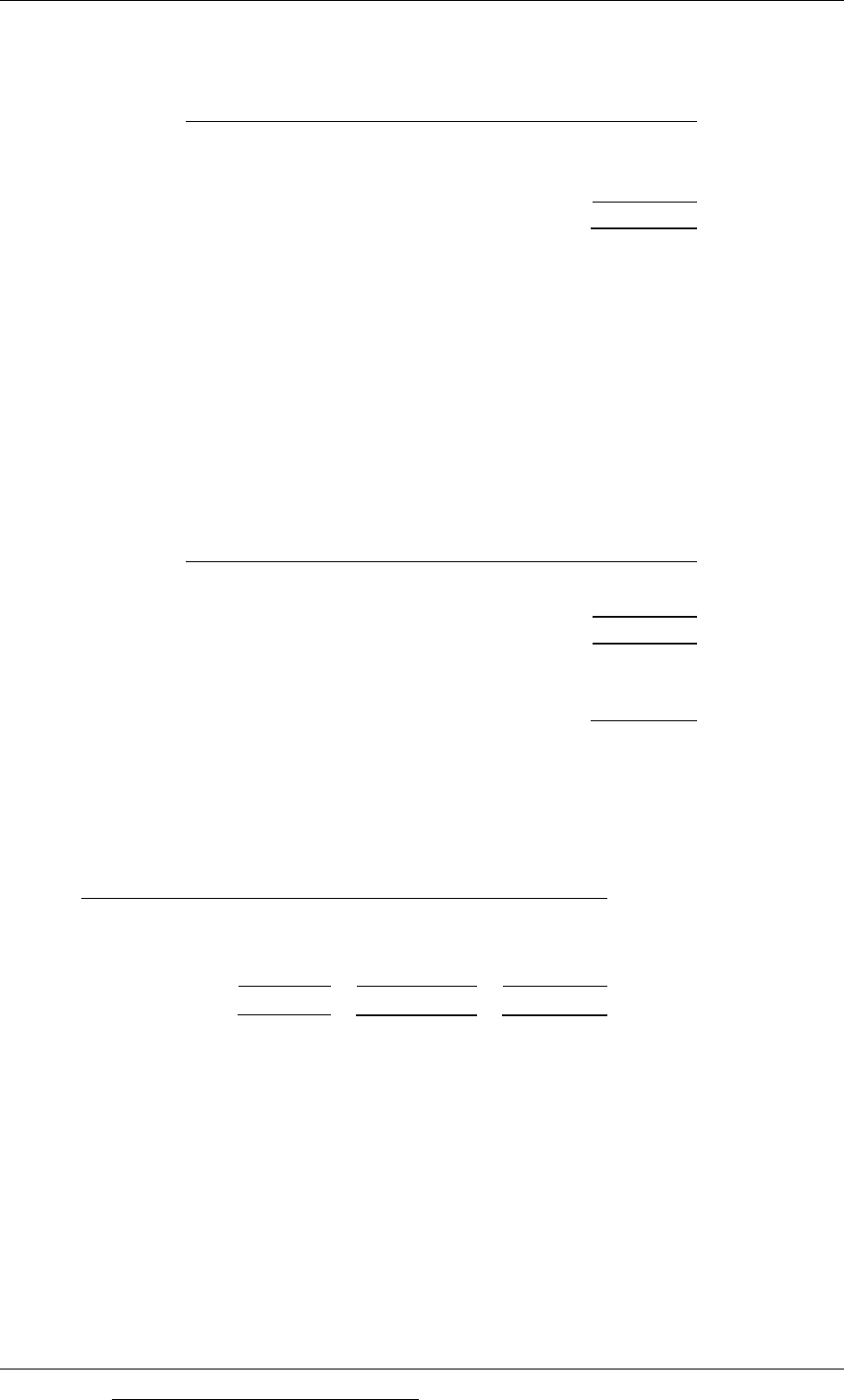
Paper F2: Management accounting
446 Go to www.emilewoolfpublishing.com for Q/As, Notes & Study Guides © EWP
Therefore variable costs = $6,000/$8,000 = 0.75 or 75% of sales revenue.
Substitute in high or low equation Cost
$
Total cost at $128,000 revenue 126,000
Variable cost at $128,000 revenue (× 0.75) 96,000
Therefore fixed costs 30,000
(ii) At sales of $128,000, profit is $2,000.
The contribution/sales ratio = 100% – 75% = 25% or 0.25.
To increase profit by $3,000 to $5,000 each month, the increase in sales
must be:
(Increase in profit and contribution) ÷ C/S ratio
= $3,000/0.25
= $12,000.
Sales must increase from $128,000 (by $12,000) to $140,000 each month.
Alternative approach to the answer
$
Target profit 5,000
Fixed costs 30,000
Target contribution 35,000
C/S ratio 0.25
Therefore sales required ($35,000/0.25) $140,000
33 Break-even
Workings
Sales
Sales
(at $150)
Profit
units
$
$
18,000
2,700,000
(30,000)
12,000
1,800,000
330,000
Difference 6,000
900,000
360,000
An increase in sales from 12,000 units to 18,000 units results in an increase of
$900,000 in revenue and $360,000 in contribution and profit.
From this, we can calculate that the contribution is $60 per unit ($360,000/6,000) and
the C/S ratio is 0.40 ($360,000/$900,000). Variable costs are therefore 0.6 or 60% of
sales.
To draw a break-even chart, we need to know the fixed costs.
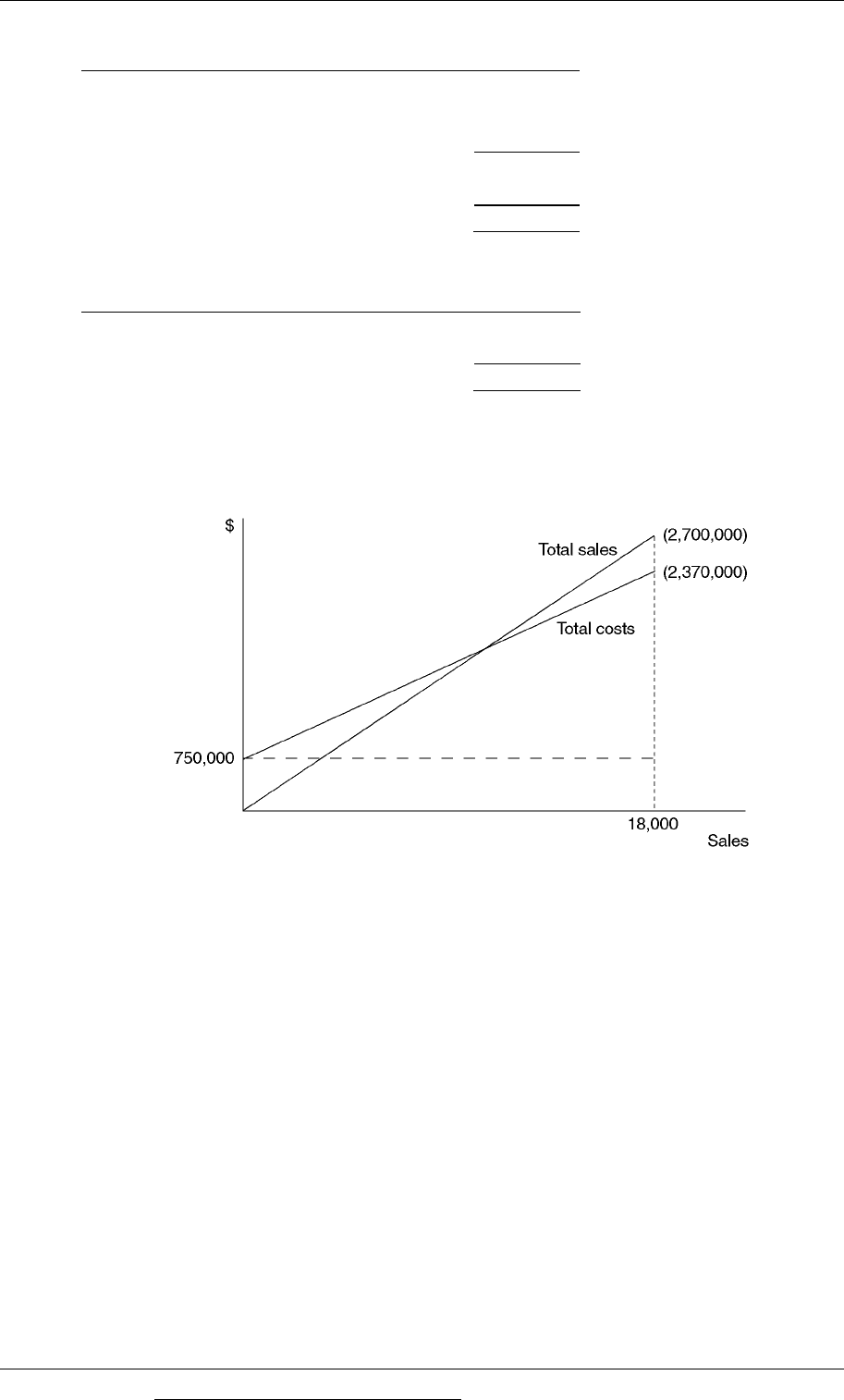
Answers to practice questions
© EWP Go to www.emilewoolfpublishing.com for Q/As, Notes & Study Guides 447
Substitute in high or low equation
When sales are 18,000 units: $
Sales (at $150 each) 2,700,000
Variable cost (sales × 60%)
1,620,000
Contribution (sales × 40%)
1,080,000
Profit 330,000
Therefore fixed costs 750,000
When sales are 18,000 units: $
Fixed costs 750,000
Variable cost (see above) 1,620,000
Total costs 2,370,000
There is now enough information to draw a break-even chart.
(a)
(b) Break-even point = Fixed costs ÷ C/S ratio
= $750,000/0.40 = $1,875,000
Break-even point in units = $1,875,000/$150 per unit = 12,500 units.
If budgeted sales are 15,000 units, the margin of safety is 2,500 units (15,000 –
12,500).
This is 1/6 or 16.7% of the budgeted sales volume.
34 Machine
Relevant cost = Difference between sale value now and sale value if it is used. This
is the relevant cost of using the machine for the project.
Relevant cost = $17,500 - $10,000 = $7,500.

Paper F2: Management accounting
448 Go to www.emilewoolfpublishing.com for Q/As, Notes & Study Guides © EWP
35 Relevant cost of labour
A total of 900 hours would have to be found by either working overtime at a cost of
$15 × 150% = $22.50 per hour, or diverting labour from other work that earns a
contribution of $5 per hour after labour costs of $15 per hour. The opportunity cost
of diverting labour from other work is therefore $20 per hour. This is less than the
cost of working overtime. If the contract is undertaken, labour will therefore be
diverted from the other work.
It is assumed that the 500 hours of free labour time (idle time) available would be
paid for anyway, even if the contract is not undertaken. The relevant cost of these
hours is therefore $0.
Relevant cost of labour
$
500 hours 0
900 hours (× $20) 18,000
Total relevant cost of labour 18,000
36 Domco
(a) 100% capacity each month = 112,000 units/0.80 = 140,000 units.
Using high/low analysis:
units
$
High: Total cost of 140,000
= 695,000
Low: Total cost of 112,000
= 611,000
Difference: Variable cost of 28,000
= 84,000
Therefore variable cost per unit = $84,000/28,000 units = $3.
Substitute in high equation Cost
$
Total cost of 140,000 units 695,000
Variable cost of 140,000 units (× $3) 420,000
Therefore fixed costs per month 275,000
(b)
Contribution/sales ratio = 60%
Therefore variable cost/sales ratio = 40%
The normal sales price per unit = $3/0.40 = $7.50
The contribution per unit at the normal selling price is $7.50 – $3 = $4.50 per
unit.
(c)
If the customer’s offer is accepted, the sales price for the 25,000 units will be
$7.50 – 20% = $6 per unit.
The contribution per unit for these units will be $6 – $3 = $3.
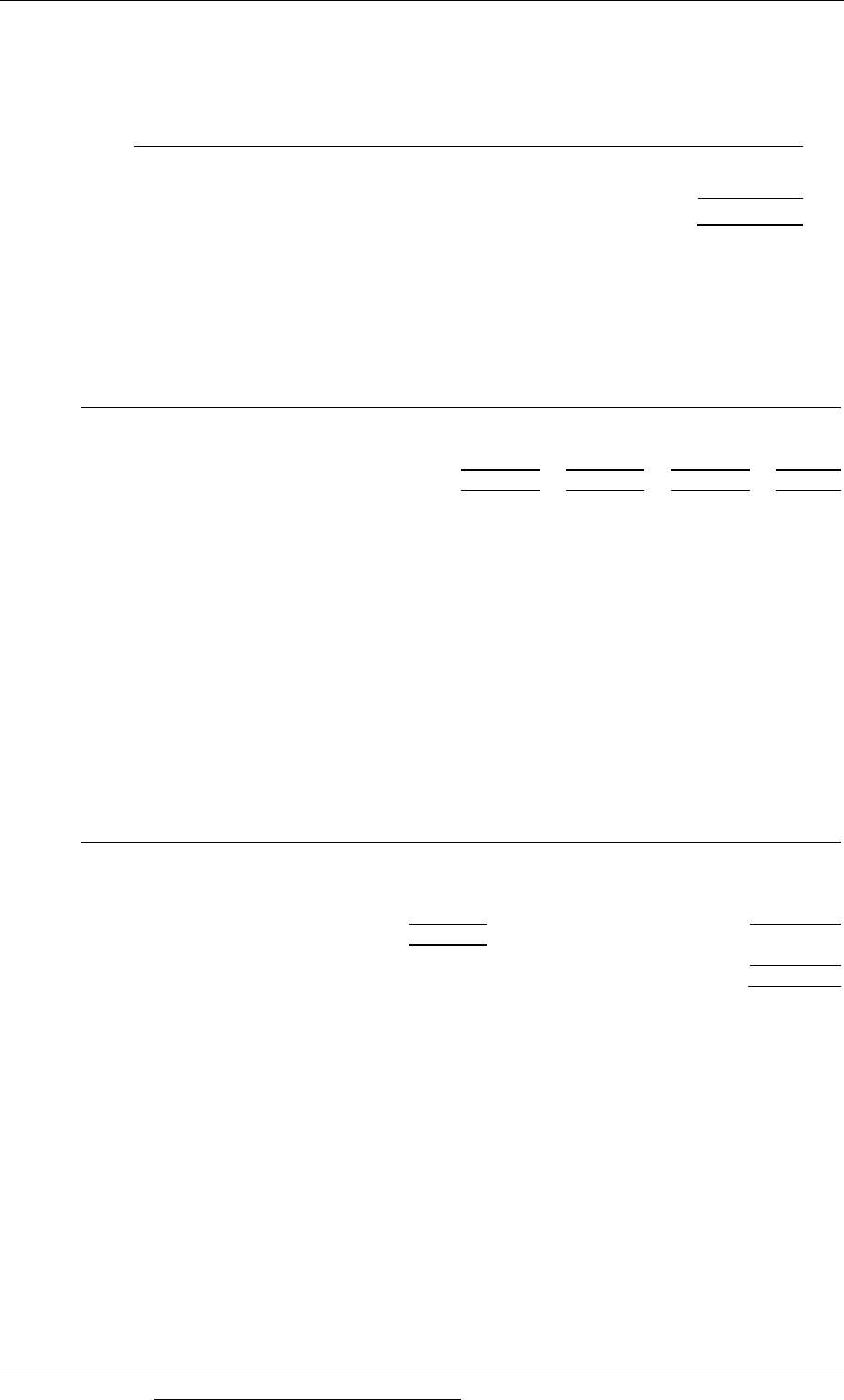
Answers to practice questions
© EWP Go to www.emilewoolfpublishing.com for Q/As, Notes & Study Guides 449
The reduction in monthly sales at the normal price will be 1/5 × 25,000 = 5,000
units.
$
Increase in contribution from 25,000 units sold (25,000 × $3) 75,000
Loss of contribution from fall in other sales (5,000 × $4.50) 22,500
Net increase in profit each month 52,500
By accepting the new customer’s offer, the profit would increase by $52,500
each month. The offer should therefore be accepted.
37 Limiting factors
A B C D
$ $ $ $
Sales price 100
110
120 120
Variable cost per litre
54
55
59
66
Contribution per litre
46
55
61
54
Direct labour hours/unit 3
2.5
4 4.5
Contribution /direct labour hour $15.33
$22
$15.25 $12
Priority for manufacture/sale
2
nd
1
st
3
rd
4
th
The fixed overhead absorption rate is $8 per hour. This can be calculated from the
overhead cost and direct labour hours for any of the four products.
The budgeted labour hours for calculating this absorption rate was 1,600 hours,
therefore budgeted fixed costs are 1,600 hours × $8 = $12,800.
The output and sales that will maximise contribution and profit is as follows.
Product Litres Hours Contribution/litre Contribution/profit
$ $
B 150.0
375
55
8,250.0
A 200.0
600
46
9,200.0
C (balance) 92.5
370
61
5,642.5
1,345
23,092.5
Fixed costs (see above)
12,800.0
Profit
10,292.5
38 Proglin
Let the number of units of Mark 1 be x
Let the number of units of Mark 2 be y.
The objective function is to maximise total contribution: 10x + 15y.
Subject to the following constraints:
Direct materials 2x + 4y ≤
24,000
Direct labour 3x + 2y ≤
18,000
Sales demand, Mark 1 x ≤
5,000
Non-negativity x, y ≥
0
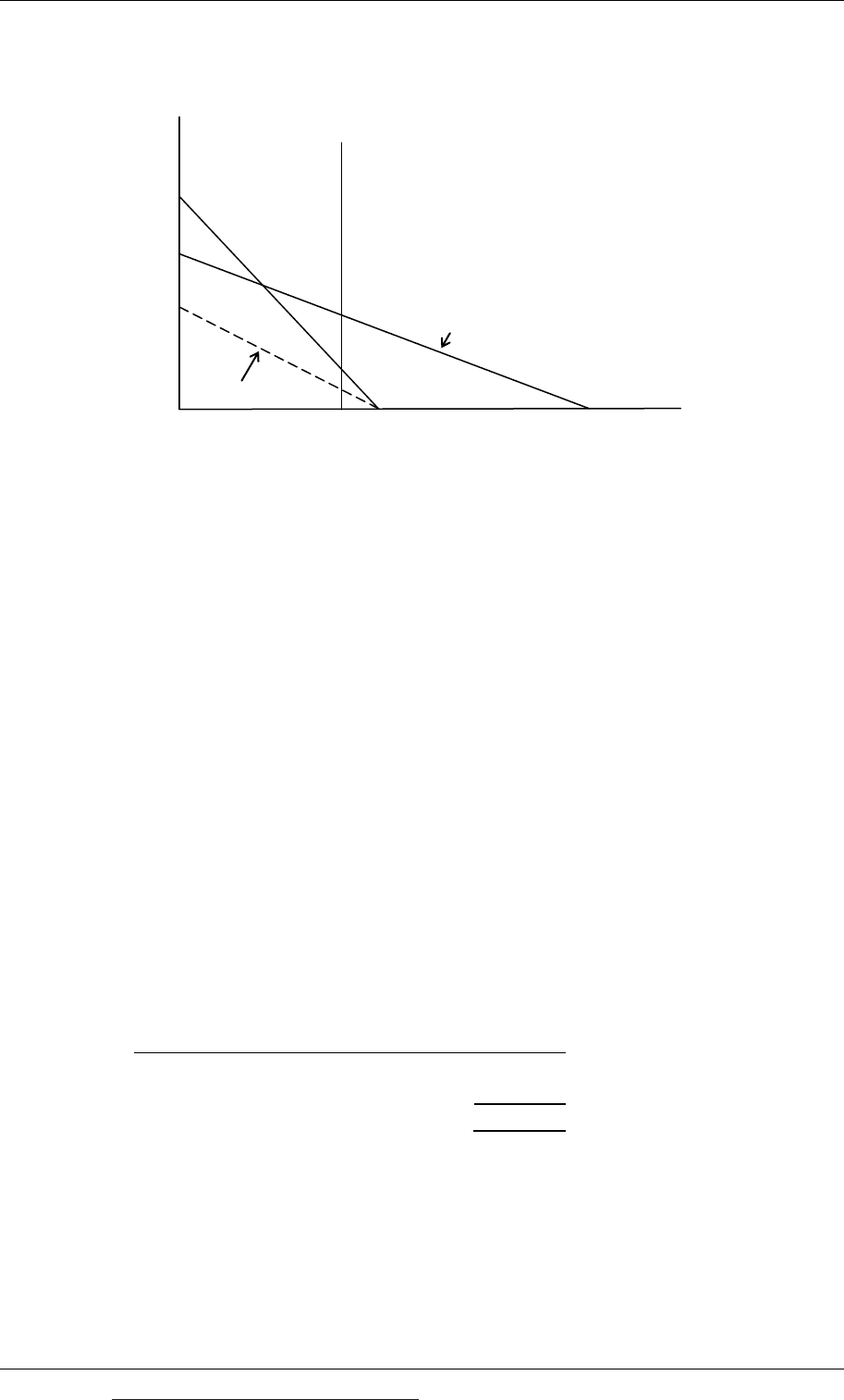
Paper F2: Management accounting
450 Go to www.emilewoolfpublishing.com for Q/As, Notes & Study Guides © EWP
These constraints are shown in the graph below. The graph also shows an iso-
contribution line 10x + 15y = 60,000.
9000
6000
4000
0
3x + 2y = 18000
A
B
$
X = 5000
6000 5000
C
D
10x + 15y = 60,000
2x + 4y = 24000
12000
The feasible solutions are shown by the area 0ABCD in the graph.
Using the slope of the iso-contribution line, it can be seen that contribution is
maximised at point B on the graph.
At point B, we have the following simultaneous equations:
(1)
2x + 4y = 24,000
(2) 3x + 2y = 18,000
Multiply (2) by 2
(3) 6x + 4y = 36,000
Subtract (1) from (3)
4x = 12,000
Therefore x = 3,000
Substitute in equation (1)
2 (3,000) + 4y = 24,000
4y = 18,000
y = 4,500
The objective in this problem is to maximise 10x + 15y.
The total contribution where x = 3,000 and y = 4,500 is as follows
$
3,000 units of Mark 1 (× $10) 30,000
4,500 units of Mark 2 (× $15) 67,500
Total contribution 97,500
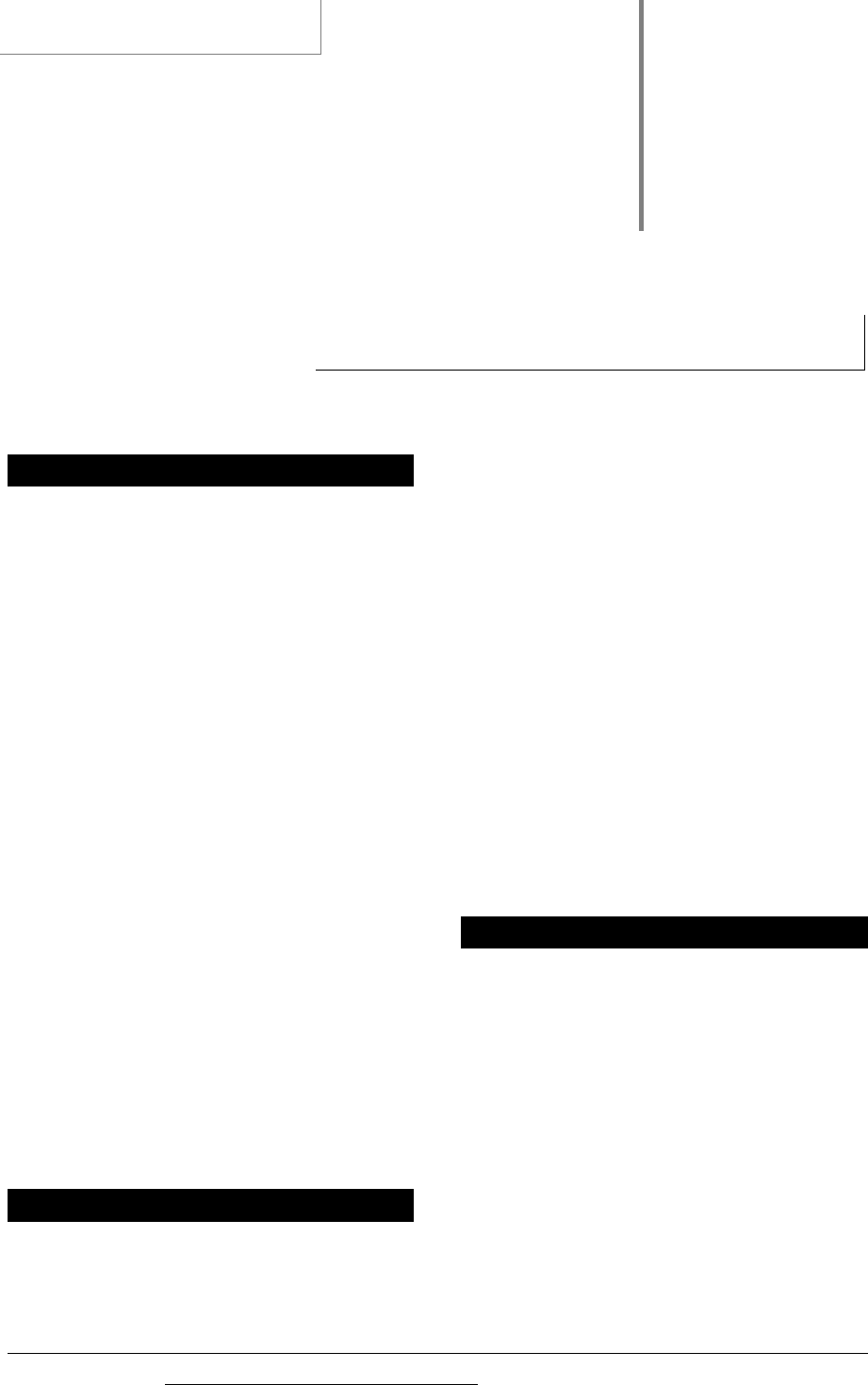
© EWP Go to www.emilewoolfpublishing.com for Q/As, Notes & Study Guides 451
Paper F2
Management accounting
i
Index
A
Abnormal loss 208
Abnormal loss and loss with a scrap value 210
Absorbed production overheads:
cost ledger 173
Absorption 130
Absorption costing: 126, 184
advantages and disadvantages 190
criticisms 128
definition 127
purpose 128
Absorption rate 144
Accounting for abnormal gain 213
Accounting for abnormal loss 209
Accounting for labour costs 112
Accounting for normal loss: 206
cost ledger 207
Accounts in the cost ledger 162
Administration costs 27
Adverse variances 262
Allocation 130
Apportioning common processing costs 234
Apportionment 130, 133
Avoidable and unavoidable costs 324
B
Balance on an account 163
Basis of apportionment 134
Batch costing 197
Batch production 102, 197
Bin card 90
Break-even analysis 312
Break-even chart 317
Break-even point 312
Budget: 149, 240
committee 241
manual 241
period 240
process 243
Budgetary control 241, 252
Budgeting 240
Budgeting with one limiting factor 343
By-products 235
C
C/S ratio 309
Capacity utilisation ratio 118
Capacity variance 280
Closing inventory 168
Coefficient of determination r2 78
Composite cost units 200
Computerised inventory control system 90
Constraints 347
Constraints on a graph 351
Contribution 180, 307, 309
Contribution forgone 330
Contribution per unit 181

Paper F2: Management accounting
452 Go to www.emilewoolfpublishing.com for Q/As, Notes & Study Guides © EWP
Contribution/sales ratio 309
Control 14
Conversion costs 204
Correlation 74
Correlation coefficient r 77
Cost accounting 20
Cost accounting income statement 176
Cost and management accounting 22
Cost behaviour 42
Cost behaviour graph 46, 43
Cost centre 17, 39, 130
Cost estimation 49
Cost ledger 162
Cost ledger control account 170
Cost object 38
Cost of sales account 175
Cost unit 38
Cost variances 262
Costing system income statement 168
Costs of production and the WIP account 164
Cost-volume-profit analysis 306
Credit 163
CVP analysis 306
D
Data 12
Debit 163
Decision-making 62
Degrees of correlation 75
Delivery note 89
Depreciation charges 335
Differential cost 324
Differential piecework systems 115
Direct costs 33
Direct expenses 34
Direct labour: 34
rate and efficiency variances 269
budget 249
efficiency variance 269
employees 110
rate variance 269
Direct materials: 33
price and usage variances 265
usage variance 266
Double entry accounting for costs:
overheads 172
Double entry cost accounting system 163
E
Economic batch quantity (EBQ) 102
Economic order quantity (EOQ) 95
Efficiency variance 270, 280
EOQ:
changes in the variables in the formula 97
price discounts for large orders 100
Equivalent units: 218
FIFO method 225
weighted average cost method 221
Expected (EV): limitations 67
Expected value (EV): 63
decision-making 65
Expenditure variance 152, 273
F
Favourable variances 262
FIFO method of process costing 225
Finance costs 28
Financial accounting 21
Financial ledger control account 169
Finished goods 163
Finished goods account 175
Fixed budgets 252
Fixed costs 43
Fixed overhead: 155
absorption costing 155
Fixed overheads variances:
causes 282
Fixed production overhead capacity
variance 280
Fixed production overhead cost
variances 276
Fixed production overhead efficiency
variance 280
Fixed production overhead expenditure
variance 277
Fixed production overhead volume
variance 278
Flexed budgets 253, 255
Flexible budgets 255
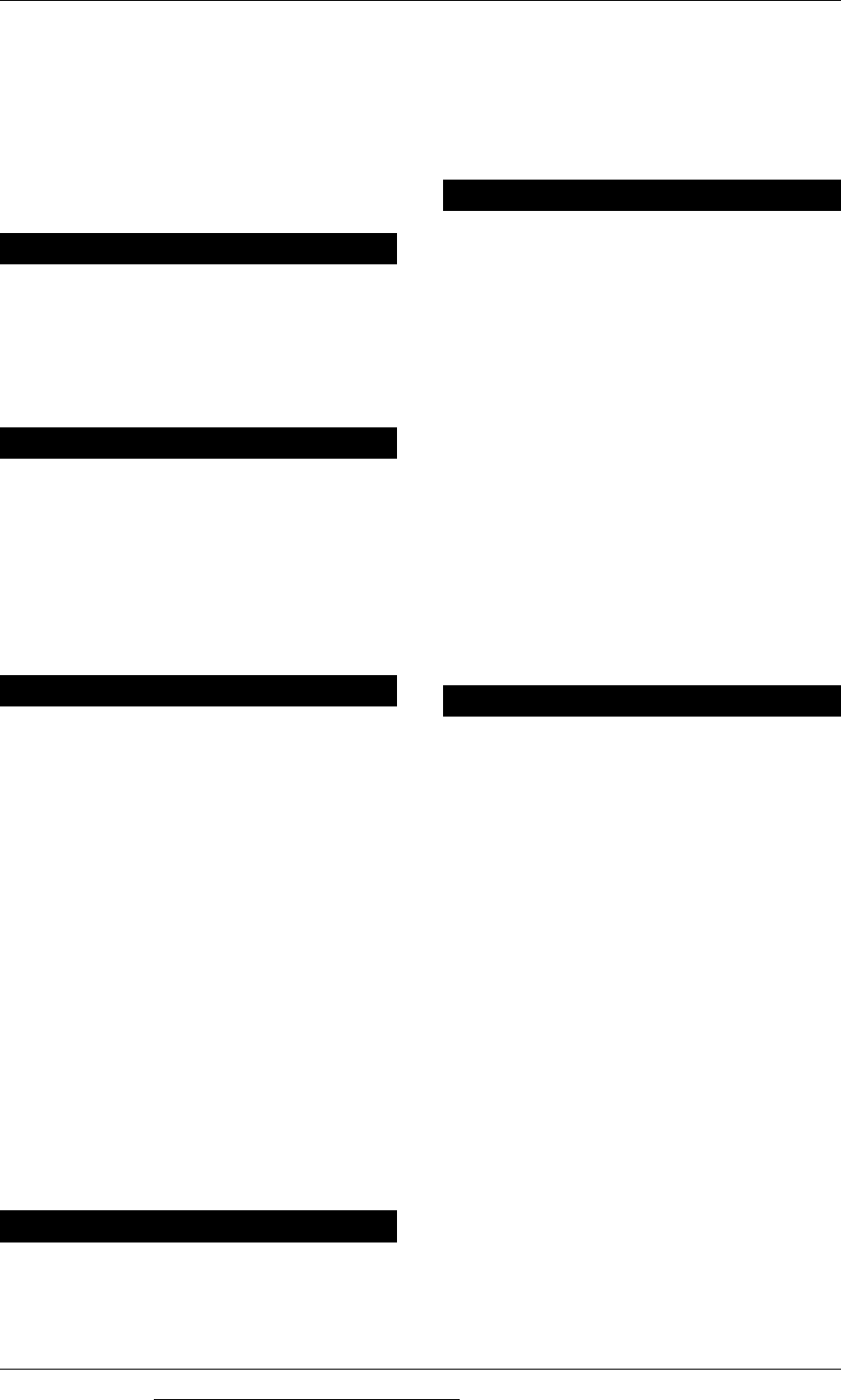
Index
© EWP Go to www.emilewoolfpublishing.com for Q/As, Notes & Study Guides 453
Full cost 36
Full cost of sale 127
Full production cost 127, 144
Functional budgets 242, 245
Functional costs 29
G
Goods received note 89
Gradual replenishment of inventory 102
Graph of linear cost function 50
H
High/low analysis: 50
charge in variable cost 56
step change in fixed costs 53
High/low method 49
Holding costs 94, 97
I
Idle time 110
Incentive schemes 116
Income statement 168
Incremental cost 324
Indirect costs 35, 126
Information: 12
attributes 13
Information for decision making 322
Interrelationships between variances 288
Inventory accounts 162
Inventory ledger record 90
Inventory records 89, 90
Inventory records:
monitoring physical inventory 91
Investment centre 17
Iso-contribution line 353
J
Job account 196
Job card 196
Job costing 194
Job sheet 196
Joint products 234
L
Labour budget 249
Labour costs 26, 110, 112
Labour efficiency:
ratio 118
variance 269
Labour rate variance 269
Labour turnover: causes 121, 271
Labour turnover rate 120
Limiting factor 340
Linear function for total costs 49
Linear programming: 346
graphical solution 351
Linear regression analysis 69
Losses and gains at different stages of
the process 230
M
Management accounting 20
Management control systems 20
Management information system 12
Manufacturing costs 27
Margin of safety 314
Marginal cost 42, 178
Marginal costing: 126
advantages and disadvantages 190
assumptions 179
reporting profit 181
uses 179
Marginal costing and absorption costing 184
Marketing costs 28
Master budget 241
Material costs 26
Materials: procedures and documentation 88
Materials inventory account 93
Materials price variance 265
Materials purchases budget 248
Materials requisition note 91
Materials return note 91
Materials usage budget 247
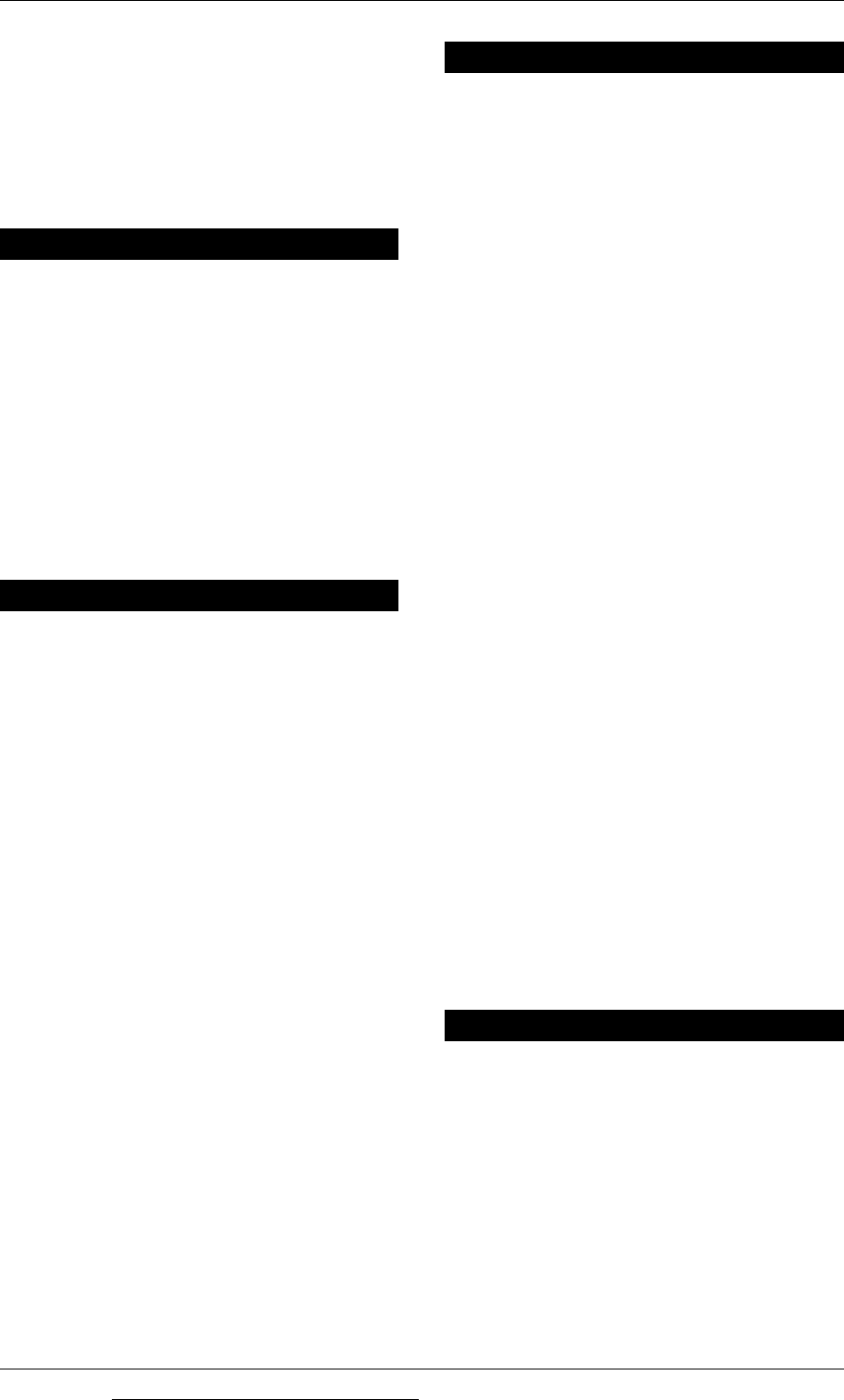
Paper F2: Management accounting
454 Go to www.emilewoolfpublishing.com for Q/As, Notes & Study Guides © EWP
Materials usage variance 266
Materials variances: causes 267
Maximum inventory level 108
Minimum inventory level 108
Mixed costs 44
N
Negative correlation 77
Net book value 335
Non-production costs 27
Non-production overheads:
absorption costing 147
cost legder 167
Normal loss 206
Notional annual charge 335
Notional value of an asset 335
O
Objective function 346, 353
One-off decision making 15
Opening inventory 168
Operating statement: 290
standard marginal costing 293
Operational planning 15
Opportunity cost 328, 325
Ordering costs 95, 97
Organisation structure 16
Over-absorbed fixed production overhead 277
Over-absorbed overhead 150
Over-absorption 150
Overhead absorption 144
Overhead absorption rate 144
Overhead apportionment 133
Overhead cost allocation 131
Overhead expenditure variances 278
Overhead recovery rate 144
Overheads 35, 126
Overheads budgets 250
Overtime premium 111
P
Payroll records 112
Perfect negative correlation 75
Perfect positive correlation 75
Performance reporting 262
Period costs 37
Perpetual inventory 90
Piecework systems 115
Planning 14, 15
Positive correlation 76
Predetermined overhead rate 149
Price discounts for large orders 100
Price variance 265
Prime cost 35
Principal budget factor 242
Probabilities and expected values 63
Process costing: 204
abnormal gain 213
inventory valuation 218
joint products and by-products 234
losses 206
Production and non-production costs 30
Production budget 246
Production costs 27
Production overhead expenditure variance 277
Production volume ratio 119
Productivity ratio 118
Profit centre 17
Profit/volume chart (P/V chart) 318
Purchase invoice 89
Purchase order 89
Purchase requisition 89
Purchasing procedures 89
R
Rate variance 269
Reciprocal method 136
Reciprocal method: simultaneous
equations technique 140
Reconciling budgeted and actual profit 290
Recovery 130
Recovery rate 144
Regression analysis 69
Relevant costs and decision making 323
Relevant costs and overheads 333
